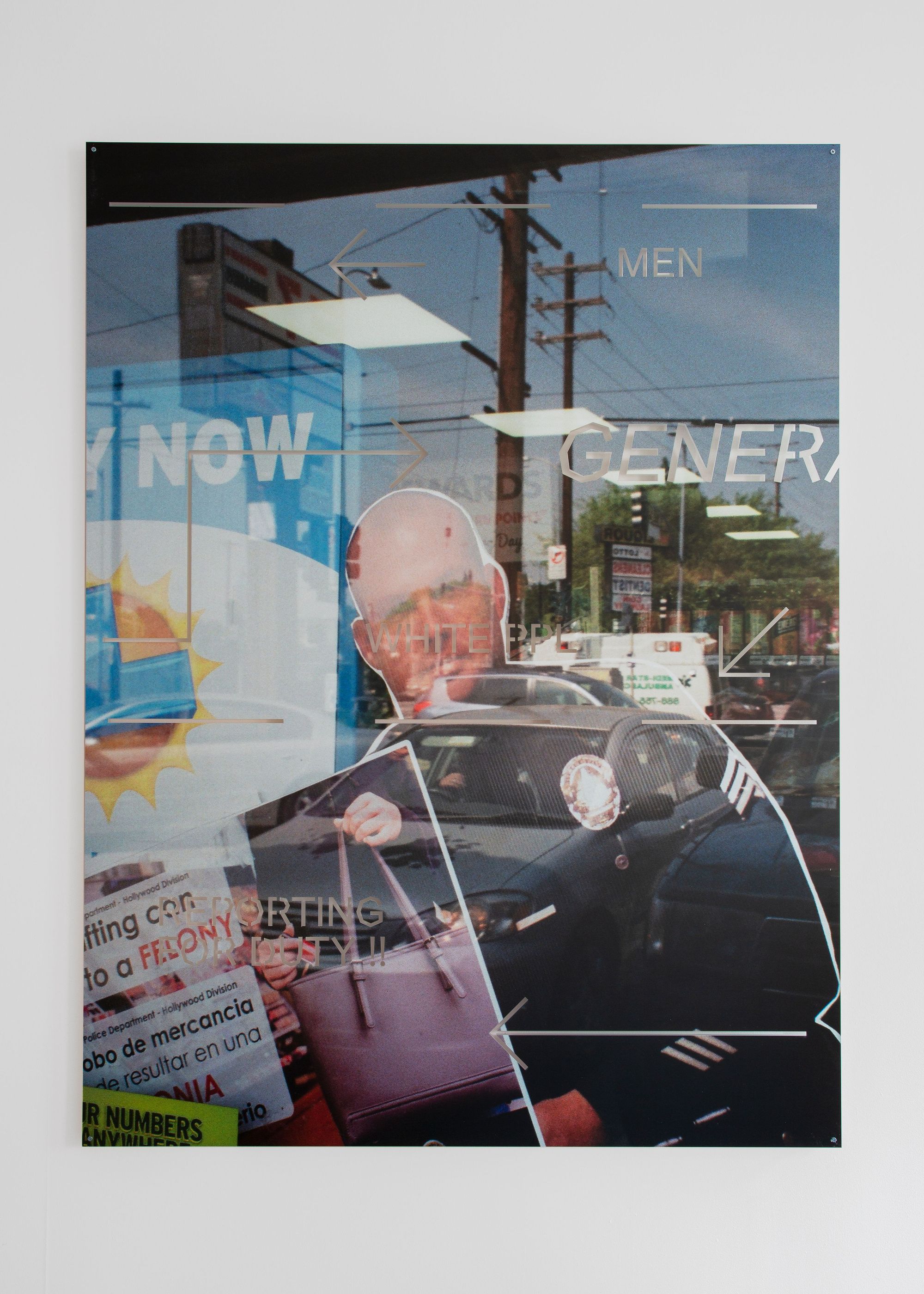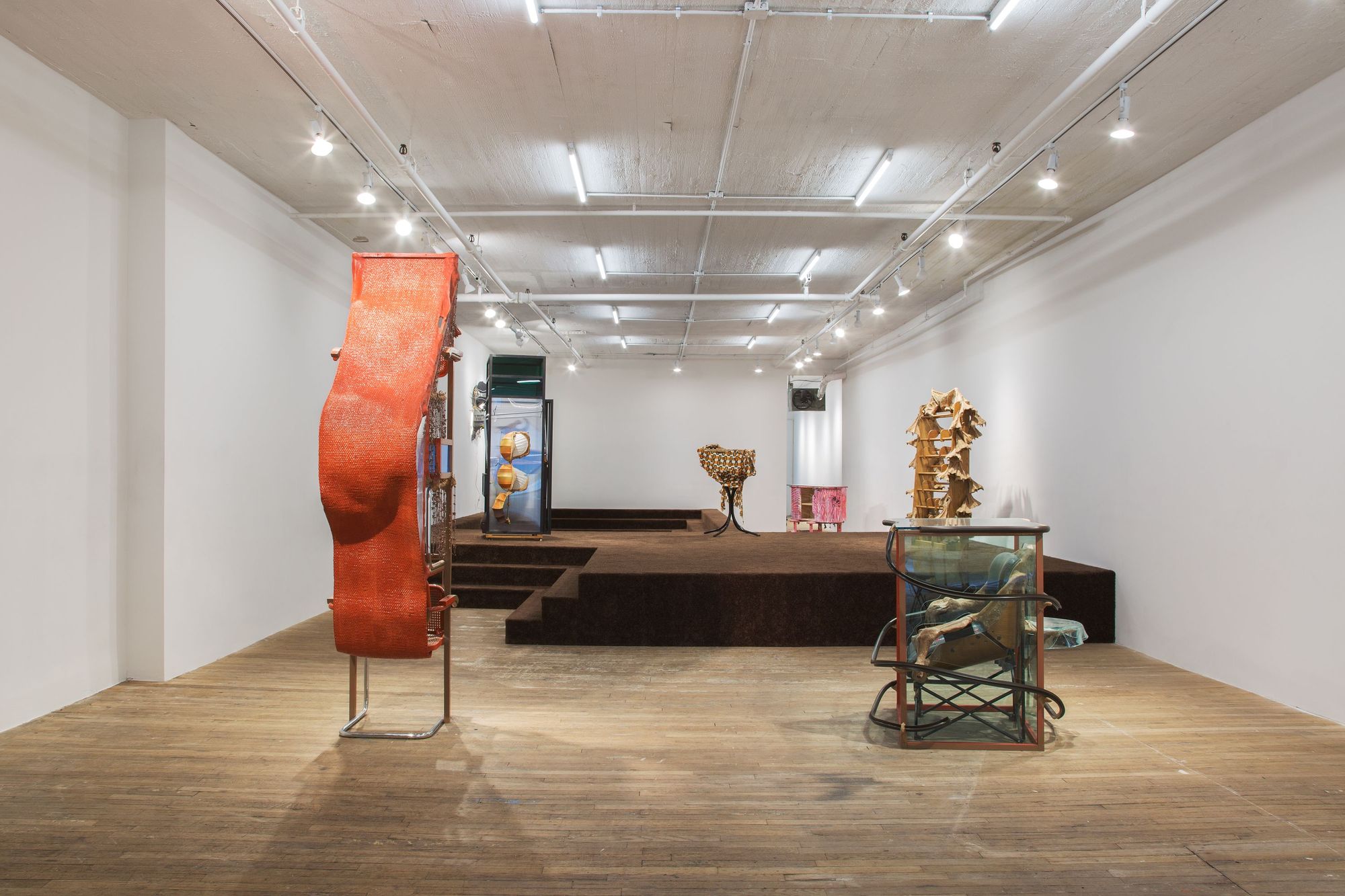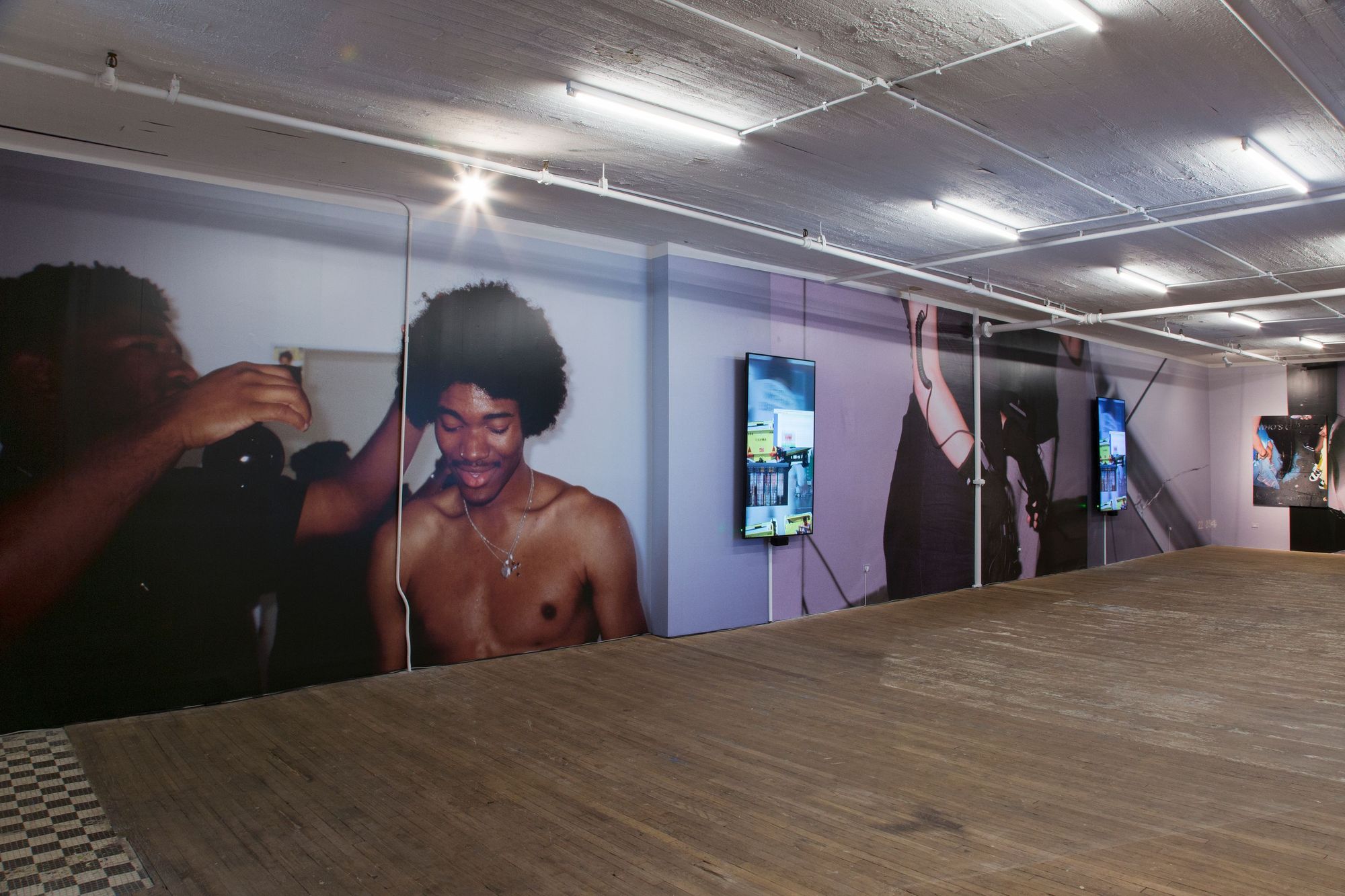The Object Talk: Bridget Donahue
The Object Talk opens with the gallerist and curator, Bridget Donahue. Since 2006, Donahue has traversed the artworld starting as an archivist at Gladstone Gallery, then as a director of Gavin Brown's Enterprise. She opened her eponymous gallery in 2015 after leaving her post at GBE and entertaining the idea of what comes next. Her roster of artists include: Lisa Alavarado, Olga Balema, Susan Cianciolo, Lynn Hershman Leeson, Satoshi Kojima, Ragen Moss, Monique Mouton, Sondra Perry, Jessi Reaves, John Russell, Martine Syms, and Mark Van Yetter.
Welcome to The Object Talk.
There's this quote, “if you don't understand it, then leave it alone.” For me, it loosely translates to if you're trying to make something make sense, maybe it's not meant to make sense.
That's such a freeing thought that you don't have to crack the code, to understand it. Or with gallery programs specifically, you don’t have to represent the person. Right? What about just being a fan? I think about the duty of representing artists, and deciding when maybe I'm just a better fan of that person than a guiding or collaborative force. The art that I covet or want to hang on my wall is sometimes different than the art that I work with. And it's almost back to the notion of understanding thing you mentioned. I almost feel like a lot of the art here [in the gallery], I don't understand it yet fully. So, to stay in a kind of confounded, interested, curious questioning state–I like to be in that state.
Right, I guess the idea of “it”, you know the subject matter, is dependent upon where you’re trying to go and what you’re trying to achieve with the understanding. Instead of trying to make it make sense, bask in it fully, and give yourself over to the experience. I'm really obsessed with highlighting the differences between the narration of a life lived and living the life. So many people are really good narrators of their own lives and are like, “I’m friends with this person; we do this together; these are who our friends are; this is how we know what we do.” And it really does hinder events from happening––it alienates the possibility of culture and collaboration from happening––when you’re narrating your life to that degree; accidents don’t and can’t happen.

That’s so well framed to me. In the early days of the pandemic, you know the gallery has been closed, but we have these social media presences and e-blast, and I saw a lot of people were trying so hard to keep in touch. I just felt tongue-tied, I’m a chatty person by nature but the idea of having to create content to keep engaged while we were closed felt disingenuous. I found a little bit of comfort in the idea of the narration of what was happening and what I thought should happen, for myself at least. I would prefer to be here [in New York] doing something like participating with my body, instead of my words.
In February, next year, the gallery will be six years old. So, I’ve been thinking about what growth means there, and I’ve been trying to have conversations with my artists consistently asking, “What’s interesting for you? What do you need?” and seeing what they need from me. There are galleries that you see all the time that change spaces or scale up. Especially, with those that have been closing more recently and recognizing opportunity for growth and trying to weed through my desires to do and be more.
Where are you thinking of going?
Nowhere yet, I don’t think. But it's like, you know, will this economic disparity change the New York landscape and create opportunities for us in the art world? Can we get bigger spaces? The depressing part about the [current] space is that it’s not accessible, it has stair-only access, which is a huge and important dream of mine, that has been impossible to realize because of budgetary constraints. I’ve been thinking about what it would mean to occupy a different space and thinking about if rents will drastically decrease because of market and demand but it’s hard to say.
What does it mean to you to own a gallery now that it didn't mean six years ago?
Six years ago, I felt a little bit of pressure around the idea that of starting something that if I was going to do it, I needed to do it properly and fully commit. I was a part of like a four-person run storefront gallery called Cleopatra’s in Greenpoint. It was in one of the shop fronts with a narrow floor plan. When I was looking for a new space, there were a lot of options down here in Chinatown, that were the early days of Orchard Street or other Lower East Side galleries with spaces like that. Similar to the Larry gallery, you know, in that kind of format. And I knew since I had already made exhibitions in a space like that, I wanted a bigger space. Then I took cues from a couple of people and stumbled upon this space, which is on the second floor, in a building on Bowery. From working at Gladstone Gallery and Gavin Brown's Enterprise, I learned how to produce shows differently and not in a shoestring way. Six years later, it's like, I just truly believe that the floors are a great example of an element as a metaphor. It was the least resistance. We had carpet on there. We flled the carpet off, sanded it down and it is what it is. I think the program ended up really connecting to people in that way, in the same way we exposed the floors. It's kind of an authentic and pretty direct messaging of what people [on my program] are doing.
Right, they’re living and thinking with themselves, and working through questions they may have in public…
There was an element of the hand that was so great. A friend who I had spoken to about plaster walls, when I was trying to structure the gallery in that “proper” way, I had mentioned before said, “If the art is good, the walls don't matter.” And it's such a good point. You can polish this thing but if it’s not interesting then nothing architectural is going to change its reception. I feel a bit more confident about what the messages are and the kind of delivery of intention–my own and the artists–that is palpable. People feel it and are disarmed and able to connect in a really direct way. And that is so encouraging because I don't have to consult some filter or a PR kind of machine, and am able to trust my instincts in a different way after six years, you know, than at the beginning, I’d never know what the end result would be. I had to give myself over to the process of letting this thing form outside of me and show me what I need to succeed.
What has changed program-wise over the past six years?
I didn’t realize at the time, but someone mentioned the other day how they were surprised how I built my programming out the way that I did. My first show was Lynn Hershman Leeson, and when you went to the website, you’d click the artist section and her name was the only one there. The next year, I did a show with Susan Cianciolo, and after that we did programming with Martine Syms. And it was like a Katamari ball effect, where we continued to collect the next amazing thing. After each show, I’d check in with each artist being like, “Hey, how'd that go for you? Was it okay? Did that feel good for you?” I didn't really like have my whole crew assembled at the time. I think through goodwill and faith, whatever, you know, the artist stuck with me and then I knew other artists were interested and it was very slow build.
Slow in which ways? Was it touch and go?
Slow to ask the next person, “Hey, do you want do a show?”. Then we got to this mark, where it had been two years since Lynne’s first show, and we decided to do another by Lynne. And now, almost every artist has had two shows. We kept adding other artists to the list, although there have been other artists who we have done shows with where the plan was to just do a stand-alone show, who already had a gallery in place but the timing made sense, who we never added to the program. I think it’s interesting because of what it reflects about what comes in between those who are on the roster and the artists who contribute to the programming in their own way.

How does that inform how you thought your program should be ran? Were you considering mimicking Gladstone’s or Gavin Brown's Enterprise?
I think Barbara's [Gladstone] programming has more of a formal relationship between each artist and interest in their work. I sort of feel like Gladstone’s has beautiful objects, you know, like there's a kind of containment around a lot of things there in a way. I mean, Thomas Hirschhorn and Matthew Barney, those installations are insane. During my interview for Gladstone, which was for the archivist position, they asked, “which artists do you like?” and I said, at that time, in 2006, “Thomas Hirschhorn, Alighiero Boetti, and Rosemarie Trockel,” and I said that was it. And they were like, “That’s it?”. I wasn’t privy to Matthew Barney and Richard Prince at the time, who were the kings of that place, and because they were both important people to their programming–they couldn't fathom them not factoring in to who I thought should be claimed as important. I was from a textile backgrounds but through getting the job, I learned about Hirschhorn and his street alters and couldn’t believe it. At Gavin’s the programming was different, with him being an artist himself, the programming was more organic and engaged. It was built around a group of artists, which was the beating heart of that place for fifteen years or so and was unchanging.
The ethos of Gavin’s resonates with what happens at Pioneer Works. Dustin [Yellin] and Gavin have that in common in terms of programming and the vision for the space. It’s different in terms of intention because Pioneer Works is more of a vessel for ideas and collaboration and is a platform for that. Pioneer Works also doesn't collect or move work around, we just stage it, which is a process that understands itself and gets propped up differently, in culture.
…and the institution represents agency. And you have the residency programs that have such a strong impression on me. I go there a lot to visit artists in those spaces–and the technology lab–it’s a very generous spirit. It’s a different model, I like the model of the gallery, where someone’s interested in an object, they give me money, and I give the artist half. It’s such a transparent circuit, not to say money is a transparent–wherever it comes from–but I could not imagine doing fundraising.
When you mentioned the artist that you shared in your interview, I thought about my experience when I was interviewing at Artforum with the publisher, before I worked there. He asked me who my favorite artists were, and it was a super charged time politically and because I wasn’t sure which was the right answer to give, you know the one he had anticipated from me, or what was genuine to my character.
At the time, mine were Adrian Piper, Kara Walker, and David Hammons. If there were ever to be a show that I would curate or programming that I would do, it would revolve or be built around the things I've studied and learned through them. It’s undeniable in that you can’t really say anything about them because of the broad strokes and impact they have had individually and collectively, forming a new consciousness.
I never think about whether I should have listed other artists but it is revealing in terms of the questions I was personally consumed with when I gave that answer. What do you think your trajectory would have been if you did know who Prince or Barney was prior to getting the job?
Well, I think that was the benefit in a way of starting somewhere like Gladstone who had a thirty-year archive. I was an anthropology and journalism major in college. When I 26 and starting to work at Gladstone in 2006, I was a sponge. I would read every magazine that came across my desk, I would study everyone in the archives and learn them. I became an expert on Richard Prince. I'll never be an expert on Matthew Barney, though I have seen Cremaster Cycle before. I would just work, work, work. I think I worked Monday through Friday, then every Saturday I would go around to galleries. I was new in New York and I didn't really have that big of a crew. I just kind of made my own sort of grad school experience through my job as an archivist.

Why did you take that approach to New York?
I applied to tons of jobs at universities, some positions to do textile sourcing for fashion companies and all over. I kind of think I'm that person, who “bloom where you're planted,” as my mom always said.
Mm, that’s so good.
I think I would have the same approach to anything that I would do. I remember Colby Chamberlain, he’s a writer and teaches at Columbia University and Cooper Union, do you know of him? I remember telling him [when I first started the gallery] that I had a feeling that the record’s going to stop and the spotlight is going to shine on me and point me out as the fraud in the artworld. He said, “What are you talking about?” and I was like, “I don’t have a degree, I should go back to school,” and he was like, “No, we need more people to do this kind of swapping between fields because you’re going to bring new vocabulary into this world and new interest. And you know the western canon that everyone learns for the most part, people that know it can easily drop the capital AH, Art Historical references, where for me, half the time I have so many blind spots. I always have to engage with people, and have to ask, “What about that early Kara Walker piece? Tell me more about it.” I don’t know about it because I never learned about it. I think that’s what keeps me on my toes.
Do you think you have reached a place where you aren’t trying to understand why you're doing what you’re doing and how it’s functioning?
Yeah, or I'm more in a place where I'm able to admit when I don’t know something. It’s exciting to me to be able to ask someone like you, when you’re referencing an artwork that I don't know, either with whatever you’re writing or working on in your own studio, I get to hear through the lens of you, what’s interesting about that piece [gasps], and that for me, is so much better. Because I’ll remember it better and then later on when I reference or relay it later to someone else it serves as a new oral history of shared knowledge that’s exciting for me.
Is the goal with your programming to become a new institution?
I never had a hard and fast goal of where the gallery needs to be. In many ways I’d like to think that we all surpassed our goals, and that’s the current issue that I’m having to think through the capitalist model. When you sit with your bookkeeper and your taxes every year and you see a certain level of growth that way, because we’re developing markets, and prices go up, but then you spend more money on this or that because you have more money. Now, do I want to throw all my chips on the table, get a big line of credit, and go big that way? I don’t know. Does high stakes gambling make good art?
Subscribe to Broadcast